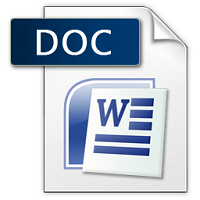₹198.00
Scroll down for Match your questions with Sample
Note- Students need to make Changes before uploading for Avoid similarity issue in turnitin.
Another Option
UNIQUE ASSIGNMENT
0-20% Similarity in turnitin
Price is 700 per assignment
Unique assignment buy via WhatsApp 8755555879
Description
| SESSION | AUG-Sep’23 |
| PROGRAM | MASTER OF BUSINESS ADMINISTRATION (MBA) |
| SEMESTER | IV |
| course CODE & NAME | ADVANCED PROJECT MANAGEMENT & DOMS404 |
Assignment Set – 1
- Describe the commercial feasibility with a suitable example. Explain the incentives and penalties in project contracts.
Ans 1.
Commercial Feasibility with an Example
Commercial feasibility refers to the practicality and potential profitability of a project or business idea. It involves a thorough analysis of market demand, cost structure, revenue projections, and competitive landscape. An excellent example of commercial feasibility can be observed in the launch of a new smartphone app for personal finance management.
The app, named “SmartSaver,” is designed to help users manage their expenses, savings, and investments more
Its Half solved only
Buy Complete from our online store
https://smuassignment.in/online-store/
MUJ Fully solved assignment available for session SEPT 2023.
Lowest price guarantee with quality.
Charges INR 198 only per assignment. For more information you can get via mail or Whats app also
Mail id is aapkieducation@gmail.com
Our website www.smuassignment.in
After mail, we will reply you instant or maximum
1 hour.
Otherwise you can also contact on our
whatsapp no 8791490301.
Top of Form
- Write different advantages and disadvantages of project financing. What are the different types of project organization structures? Explain.
Ans 2.
Project financing and project organization structures are critical concepts in the realm of project management and corporate finance. Understanding their advantages, disadvantages, and types is crucial for effective project execution and management.
Advantages and Disadvantages of Project Financing
Advantages:
- How do Industry 4.0 trends help in project scheduling and network analysis? Explain. What are the different computerized PMIS-desired features? Describe.
Ans 3.
Industry 4.0, characterized by the integration of advanced technologies such as IoT, AI, cloud computing, and Big Data analytics, significantly enhances project scheduling and network analysis. This evolution leads to more efficient, accurate, and flexible project management processes.
Enhanced Project Scheduling with
Assignment Set – 2
- Explain the goals and objectives of quality control for projects. Differentiate between identification and mitigation of risk management.
Ans 4.
Quality Control in Projects
Objective and Goals:
Quality control in project management is essential for ensuring that the project’s deliverables meet the required standards and specifications. The primary objective is to ensure that the project outputs are of high
- What do you mean by international project management? Explain the concept of global project impact. Explain the steps of CCPM.
Ans 5.
International Project Management refers to the practice of managing projects that involve cross-border teams, diverse cultures, and multiple time zones. This type of project management faces unique challenges such as language barriers, cultural differences, varying legal regulations, and
Top of Form
- What is the bond energy algorithm? How does it play an effective role in project management? Explain.
Ans 6.
Describe how technical competency is needed in selecting the projects. 3 +7
The bond energy algorithm, not a commonly recognized term in traditional project management literature, could be conceptualized as a metaphorical framework derived from the physical sciences, where ‘bond energy’ refers to the energy needed to break a chemical bond. In a project management context, this concept can be adapted to signify the strength of connections or


